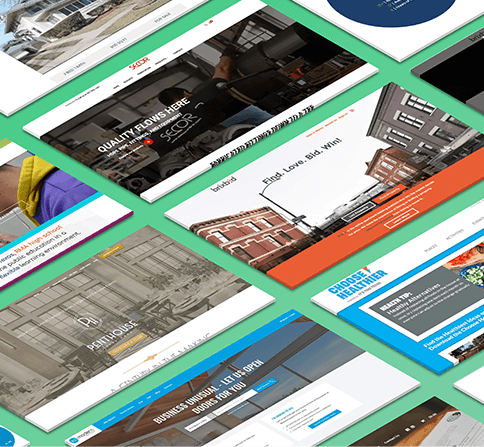Developers come in all different shapes and sizes, from the front-end firm who specializes in graphic and layout design (and struggles with intense back-end custom coding) to the hardcore application developers who often compromise user interface and graphics for functionality. Couple that with the billions of different ways to build a site or application, and the development hiring process starts to feel more like navigating a maze than making a simple decision.
That’s why we’ve compiled a list of the top 10 requirements that any successful developer or firm must embrace. Whether you hire us, or someone else, you’ll want to make sure your development firm is following all of these protocols. Here’s a sample of the types of requirements we compile in this report:

1. Your developer should provide detailed requirements, including wireframes.
Divi, offered by Elegant Themes, boasts a simple drag-and-drop editor that allows both frontend and backend editing. It provides over 46 modules, numerous drag-and-drop elements, and a seamless backend interface.
Elementor, on the other hand, is known for its user-friendly interface and extensive features. Its free version alone offers an array of tools to design a complete website, making it a popular choice for beginners and non-coders.

2. Your developer should create mockups and specifications for your application.
Changes to an application’s user interface, including colors and layout, are much easier to make in the conceptual stage. If you wait until implementation, those changes can be costly. That means time and money!

3. Your developer should utilize a Software Configuration Management (SCM) tool for all collateral.
Your new changes are live, and things aren’t working. In fact, the last time it worked right was last Thursday around noon. Since then, you’ve noticed crash after crash, bug after bug. If your developer uses a SCM tool for managing code changes, reverting back to the code from last Thursday at noon is a click away.

4. Your developer should develop your application in a separate development environment.
Your developer is making changes to the live site? Yikes! Stop him, immediately! His changes should always be siloed in a separate environment, so that they don’t negatively impact your application.

5. Your developer should stage changes to the application in a staging environment.
New features and bug fixes should be staged in a staging environment, allowing you to review the changes before giving your developer the go-ahead to promote these changes. All appropriate stakeholders should review the changes as part of the sign-off process before anything is promoted to the live application.
6. Your developer should provide an online issue tracking system.
Are your issues scattered across multiple emails, spreadsheets, or Google Drive docs? An issue tracking system allows you and your developer to review issues and assign priorities in one system, as well as track the progress on these issues.

7. Your developer should respond to your inquiries in a prompt manner.
Communication breakdown, it’s always the same! Every good developer is prompt in responding to your requests, as communication is an essential part of any successful client relationship.

8. Your developer should create applications that work across all browsers and platforms.
Today’s application technologies are built to work across a number of platforms. Every application written in the last year should work on a mobile device.

9. Your developer should never make excuses! browsers and platforms.
Excuses are the worst. Yes, of course bad things happen, but it’s your developer’s job to make them right.

10. Your developer should never hold your application hostage… Ever. browsers and platforms.
Sure, your developer’s job is to develop your application to your specifications using the timeframe and budget you requested. But it’s also his job to develop your application using common best practices and technologies, so that anyone could take over development in the future.
Get Started Today!
If you’re ready to bring your website vision to life, click this link to get started. Whether you need a simple website or a complex app solution with lots of features, we’ve got you covered. Let’s turn your ideas into a stunning reality!

